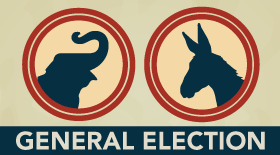 In addition to the 17 ballot propositions and the national election, California voters will be asked to cast ballots in 120 legislative races.
In addition to the 17 ballot propositions and the national election, California voters will be asked to cast ballots in 120 legislative races.
In previous years, gerrymandered legislative districts would with near certainty result in incumbent legislators being re-elected. That paradigm is out the window thanks to reforms supported by CalChamber that resulted in legislative maps being drawn by an independent redistricting commission. A second CalChamber-sponsored reform has the top-two voter getters in June move on to the November General Election, so in many cases we have races that are pitting two Democrats running against one another.
While space won’t allow an analysis of all of these races there a couple of dynamics worth pointing out.
The first of these is the battle by the majority Democrats to regain a two-thirds majority in both the Senate and Assembly. Republicans wiped out the two-thirds margin in both houses in 2014 by picking up four seats in the Assembly and one in the Senate. Now the challenge for the GOP is to hold on to those gains plus others, which will be a tall task given the registration advantage the Democrats have in many of these districts—some by 10 percent or more. In simple terms, the GOP is defending a total of 10 incumbent seats, two in the Senate and eight in the Assembly.
The second dynamic are the races where there are two Democrats in the November runoff. In several cases there is a distinct difference between the candidates, and the business community and our allies are spending heavily to promote these candidates. The promotion of moderate or business-friendly Democrats has helped the employer community fight off much of the job killing impulses of the labor-backed progressive legislative agenda.

